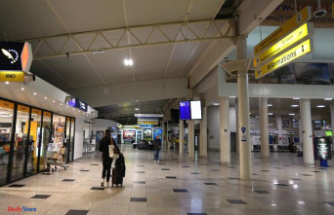Anyone who heats their house with district heating has it easy: they do not have to change suppliers regularly or grapple with the idea of replacing technology. But is that also a cheap solution?
Heating with local or district heating is particularly important in cities and metropolitan areas. Millions of tenants and homeowners get their heat for heating and hot water from networks of power or heating plants.
Are you now in the crisis and don't have to worry about ever-increasing costs? That essentially depends on which fuels are used to produce district heating in your region.
What is district heating?
District heating is generated in power plants as an additional product in the generation of electricity in plants with combined heat and power (CHP). This heat then reaches the consumer directly via a pipe system. "Almost 50 percent of district heating in Germany is obtained from natural gas, around 20 percent comes from waste incineration and renewable energies," says Werner Lutsch, Managing Director of the Energy Efficiency Association for heating, cooling and CHP. "Nearly 30 percent of district heating is still produced from hard coal and lignite."
The industry is working on making more use of renewable energies. "A lot is possible, from waste heat, biomass, solar thermal energy to geothermal energy. We are in the process of greening the heating networks," says Lutsch. For Stefan Materne from the energy team at the consumer center, this type of heating definitely has a future, since it is open to all technologies and can also be used with renewable energies.
By the way: If local heating is offered in a city, it is the same as district heating - except that the pipe length is usually shorter.
What are the advantages of district heating?
The households that are supplied with district heating enjoy a high level of comfort. "The heat comes out of the wall, so to speak, you don't need a boiler room, you don't have to worry about much," says Werner Lutsch.
What are the disadvantages?
Not everyone can obtain district heating. A connection to the regional network is required. This usually only makes sense for apartment buildings in larger metropolitan areas. "In a single-family house that was built according to the latest standards, district heating wouldn't even be worthwhile," says Werner Lutsch. "Consumption is too low for that." But things are different in older apartment buildings.
By the way: Whoever buys a house or an apartment in a district heating area often does not have the choice of an alternative heating system. "In some communities there is an obligation to connect and use district heating," says Stefan Materne. "This means that the customer is permanently tied to the local district heating supplier and its prices."
How is the price for district heating calculated?
The price for district heating consists of a basic price and a working price. The energy price covers the costs that are directly related to the heat consumption - for example for fuel and pump electricity. The basic price includes the costs for construction, maintenance and repair of the technical systems, but also administration costs and the maximum heat output.
You have to know that there are basically big regional differences, because the price depends to a large extent on the producer and on the city's district heating system. "In a flat area, it is less expensive to transport district heating than, for example, in the Alps," says Lutsch. "This is reflected in the district heating prices."
Energy expert Stefan Materne confirms this statement: "There are areas where district heating is very expensive and there are quite a few providers who ask for good prices."
How are the prices for district heating currently developing?
"The prices for district heating are currently rising, but not to the same extent as for gas," says Werner Lutsch from the Energy Efficiency Association for heating, cooling and CHP, which represents the heating industry.
According to the observations of the Federal Association of Consumers, users are sometimes exposed to dramatically increasing prices. And they have no alternative, because they cannot easily switch from district heating to other energy sources.
Can I switch to district heating?
In principle, this is possible, for example to get away from expensive oil or gas heating. But for this, an energy supplier must be willing to expand its network and lay new connections, said Tim Gessler, editor and heating expert of the trade journal "SBZ Sanitary.Heating.Klima". "Then that's obviously a viable and good option."
But it is a long-term decision. According to the consumer advice centers, contracts for a period of up to ten years can be concluded due to legal peculiarities in district heating. And switching between individual providers, for example to get cheaper contracts, is not possible because the companies are always local monopolists, since it would be uneconomical to set up a duplicate infrastructure.
After all: If you were to switch completely to renewable energies at some point, the contract can - as of now - be terminated prematurely. A two-month period applies.












